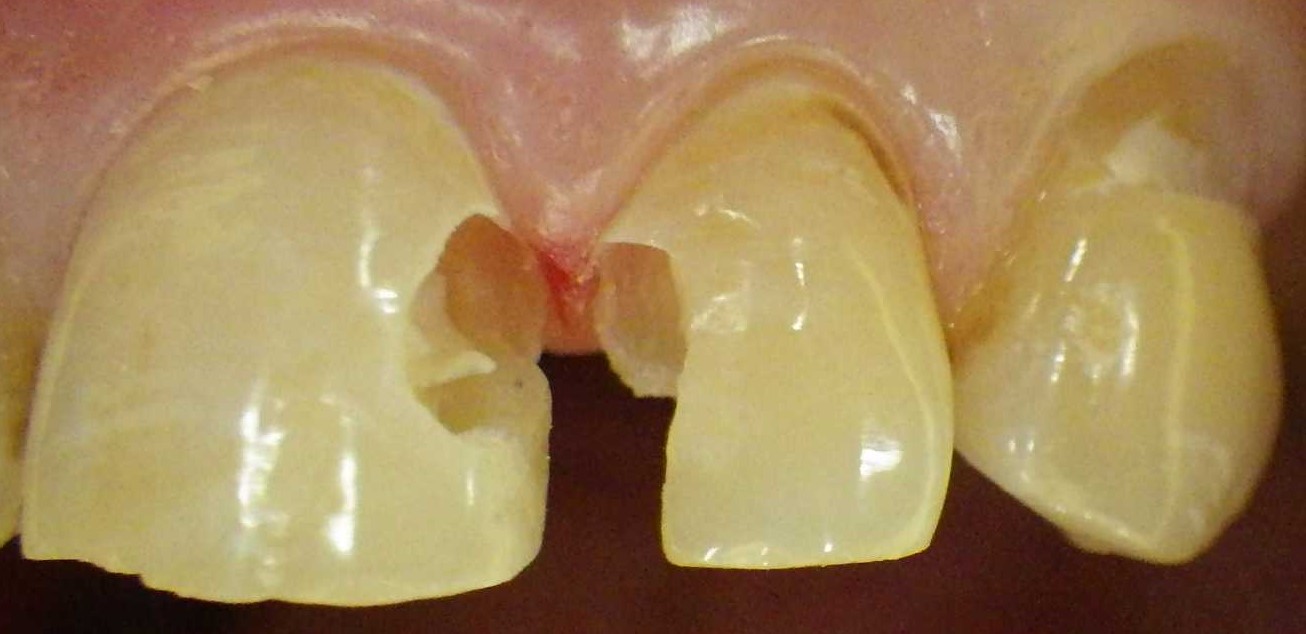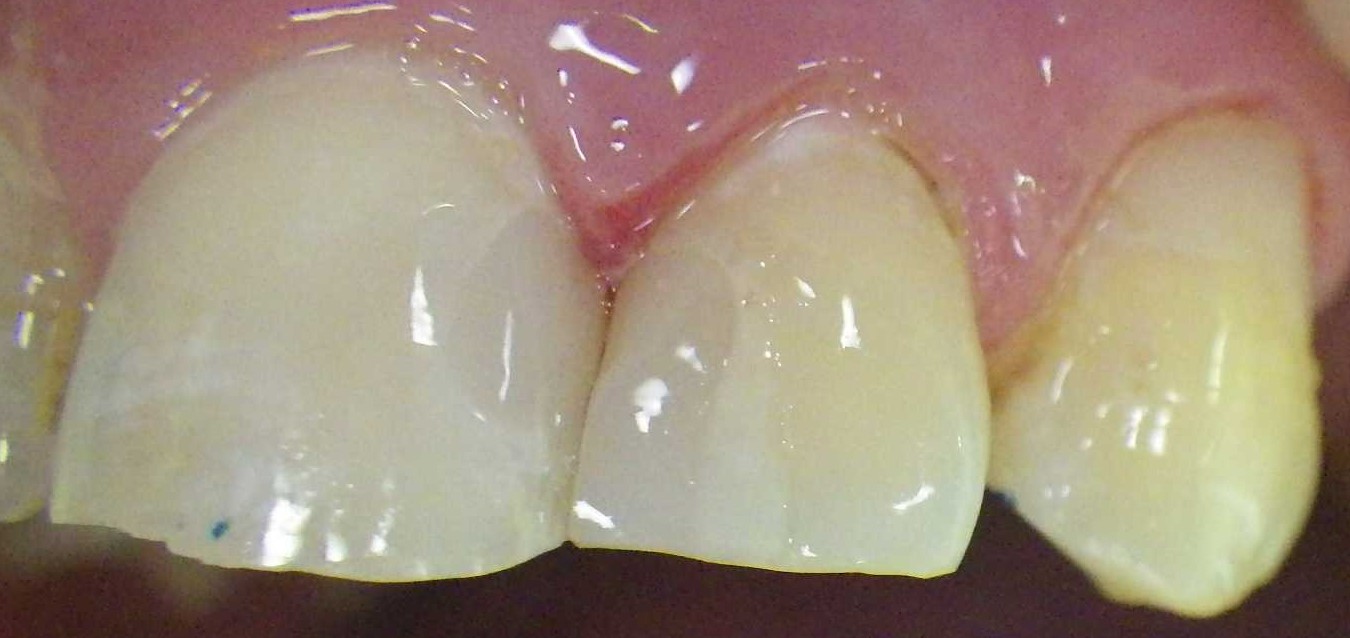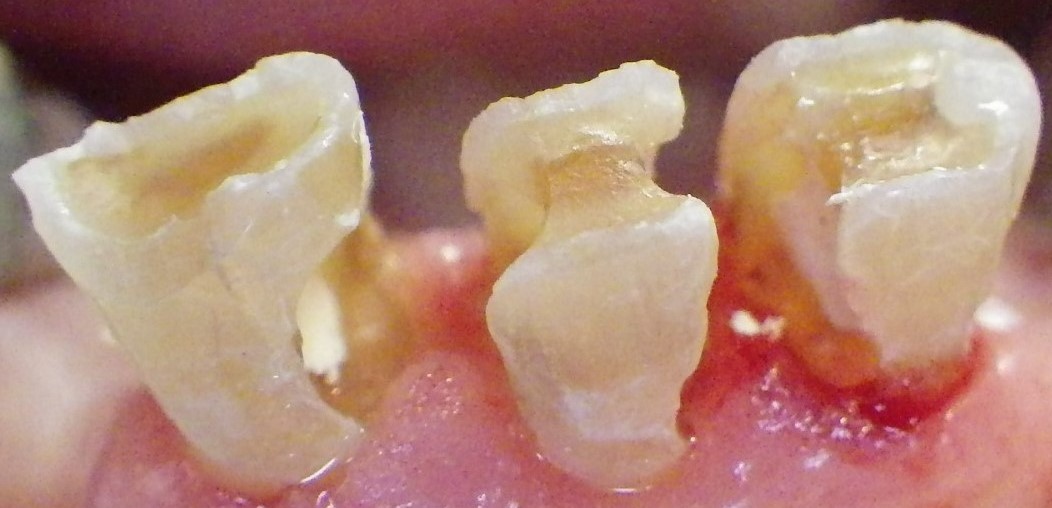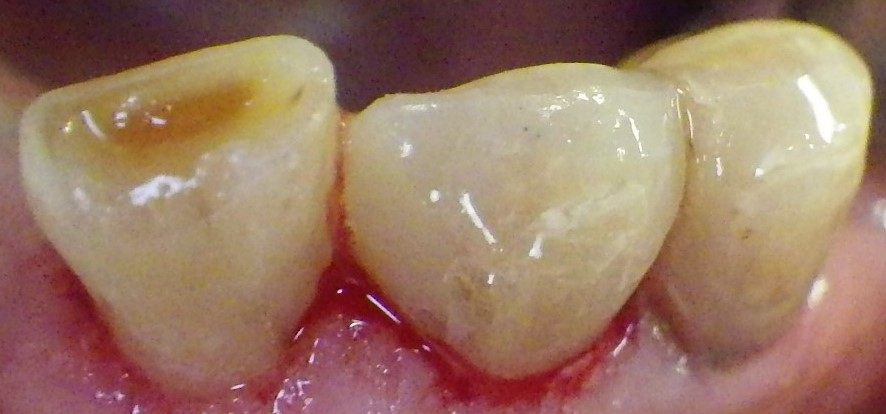Fillings
Fillings
Filling therapy is a tooth-conserving procedure which is part of conservative and at the same time also restorative dentistry. Missing tooth structure is replaced with fillings. Fillings are intended to restore the function and also, if necessary, the aesthetics (tooth-coloured fillings) of the tooth, whether temporarily (provisional filling, temporary filling) or permanently (permanent filling, definitive filling).
Depending on the anatomic position and extent of the fillings they are differentiated as cervical, incisal, occlusal and proximal fillings.
 Cavities prepared in teeth 21, 22 and 23
Cavities prepared in teeth 21, 22 and 23
 Composite fillings in teeth 21 and 22, cervical filling in tooth 23
Composite fillings in teeth 21 and 22, cervical filling in tooth 23
Any thin tapering tooth structure lamella or overhangs are removed as is carious tooth structure (excavation). Generally a tooth preparation is created using manual, rotary or oscillating instruments and/or with laser or airbrasive units. Classification according to G. V. Black (1836 to 1915) describes 5 classes of cavity. Previously, extension of the prepared cavity to predilection sites was propagated in accordance with his "Extension for prevention" maxim and in areas that could easily be cleaned and consequently the loss of healthy tooth structure was taken into account. Today the aim is maximum conservation of the tooth structure, i.e. minimally invasive fillings. Very small fillings border on prophylaxis (extended fissure sealing). Areas with exposed pulp or very thin dentine coverage are coated with a cavity lining before the actual filling is placed. Various aids, e.g. moisture control, matrices, wedges and filling instruments, are used for contouring, designing and finishing fillings.
Fillings are not only used for restoring the external contouring, masticatory ability or protection of the dentine (against external stimuli, e.g. contact, temperature or chemical substances) but also as a core build-up filling or for blocking out undercut areas for placing crowns, as a saliva and bacteria-tight seal or framework for anchorage of rubber dams in endodontics. The essential requirements of fillings are smooth surfaces (polishability, low plaque retention), mechanical stability (fracture resistance, wear resistance), chemical stability (e.g. against acid attack), biocompatibility, shape and volume stability. The marginal seal is particularly important for the service-life of fillings, i.e. permanently leak-proof, gap-free contact between the filling and tooth structure at the filling margin. Firm anchorage of the filling in the tooth is a prerequisite for this. Retention is achieved using macro-retention (undercuts), micro-retention (roughness of the surfaces involved, etch pattern with the acid etch technique) and chemically (adhesion, adhesive technique).
Basically there are two groups of fillings: plastic filling materials (amalgam, composites, cements, gold foil) can be placed using the direct technique in a single appointment chairside, even in cavities with undercuts. The two-stage (indirect) technique mainly involves (analogue or digital) impression taking, model fabrication and dental laboratory fabrication (milling, casting, pressing, sintering etc.) of a ceramic, metal (alloy) or composite inlay filling. The filling is then cemented at the second appointment.
 Teeth prepared for composite fillings
Teeth prepared for composite fillings
 Tooth-coloured composite fillings
Tooth-coloured composite fillings
Defective fillings do not always have to be removed completely and remade, a partial remake and/or addition (filling repair, filling addition) is often possible with the same or a different material (in this case mainly composite).
PROBIEREN SIE ES EINFACH AUS !!!
Von uns erhalten Sie professionelle Unterstützung.
Treten Sie mit uns in Kontakt oder nutzen Sie unser Kontaktformular.
Wort des Tages
| Deutsch | Englisch |
|---|---|
| 14er | full denture, complete denture, full upper denture, full lower denture |
Schwerpunkttext des Monats
Vergrößernde Optik in der Zahntechnik Vergrößernde Optik in der Zahntechnik |
